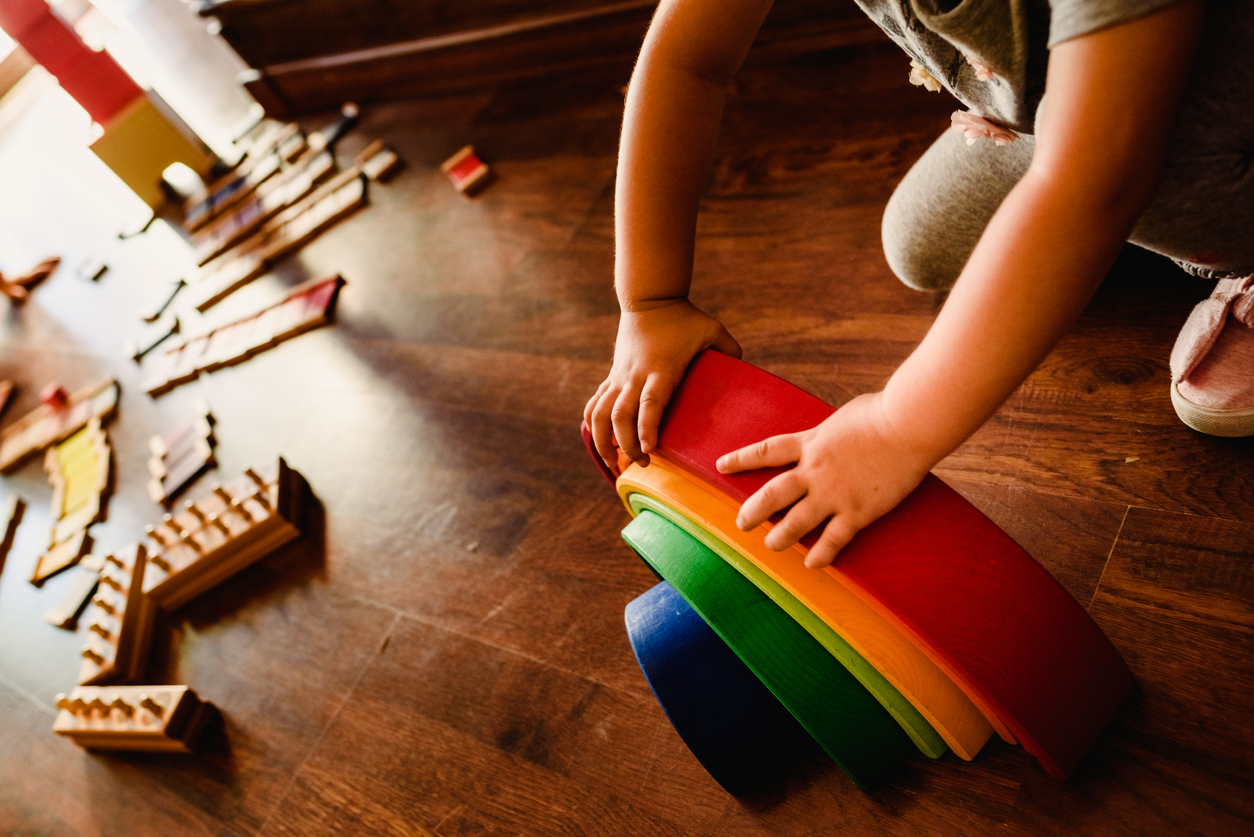What do you plan to do about the issue of “education”, which is as important as your baby’s nutrition, health and physical development? If you’re already worrying about his education, you’re quite right, because it’s a very important issue.
Fortunately, there are regular education programs to meet the educational needs of children. These programs, starting from infancy, increase the ability to learn through early intelligence development and facilitate the strengthening of the social infrastructure. One of these programs is Montessori! If you are thinking about what you will do about your baby’s education in the future, you can meet this education system and take the first step.
What is Montessori?
The Montessori philosophy, named after Italy’s first female doctor, pedagogue Maria Montessori, is a comprehensive education system that is preferred in schools and that you can apply at home. The student is at the center of Montessori education. This education system recognizes that each child’s learning pace, interests, and skills are different. According to Montessori, the child is free and has a sense of being an individual; can reach according to their abilities, interests and own learning speed. In this education system, the child is freed, he can make as many mistakes as he wants and has the right to repeat as much as he wants according to his learning speed.
In other words, with Montessori education, the child develops his/her own skills with his/her own choice and learning speed and creates his/her individual personality. Personal growth support happens by setting him free. At this point, the task of adults is to awaken the talent and hidden power in the child and to support them in the development process.
In Montessori education, the child has the following characteristics:
He is free in his choices.
It has freedom of movement.
There is freedom to make mistakes.
He manages his social relations by himself.
It has the right to repeat.
In schools that adopt and implement the Montessori education system, children can move around freely in the classroom. All areas in the school are open to children. Children can do the activities they want in these areas. There is one of each material in the classroom. The child waits for the material to be finished. This gives the child the ability to wait, patience and empathy. Every child is a natural leader in this education system, which also improves the individualization aspect of children. Methods applied in Montessori education include daily life skills, math activities, language development activities, sensory education activities, and universal learning activities.
So, what are the benefits of Montessori education for the development of the child?
It accelerates the mental development of the child.
Develops his unique skills.
It provides the development of fine and gross motor skills.
It gives you the opportunity to express yourself better.
The child discovers himself and his potential.
His self-esteem will be high.
The child gains the ability to train and develop himself.
How to Apply Montessori Education at Home?
The most important thing you need to know about Montessori education is how to apply it. If the school your child will attend provides this training, the trainers will fulfill their duties, but this training covers children between the ages of 0-6. So you can give this pre-school education to your baby or your child at home. It is useful to give details about Montessori education step by step.
The Montessori method is planned according to the idea and personality of the child to be self-sufficient. To ensure this, the child must be observed well and the right educational materials must be selected.
There are regularly categorized educational materials in the environment.
These educational materials are generally educational toys. But don’t just think of them as teddy bears or cars. These materials may also consist of stationery products; bottle caps, cones, colored cards or balls.
We may reproduce these materials. Loosen rings or knots, stringing beads of different colors, number blocks, colorful funnels can be found in your materials.
The important thing here is to categorize them correctly and position them within their reach. It will not make any sense to store these tools high, in a cupboard out of the reach of children or under a plinth.
Materials such as books, intelligence games, stationery products can be distributed to different places.
Montessori tries to make the child self-sufficient. Accordingly, you can design his room or the whole house in accordance with this education system. For example, you can put her food on the shelf in the refrigerator where she will grow up, arrange her clothes at the bottom of the cabinet for her to choose her own clothes, or place a stool around the closet so that she can make her own toilet.
You can easily implement these activities that accelerate the mental development of children and enable them to develop their unique skills, and you can take a solid step towards becoming a programmed and free individual who can express himself in his future life.
